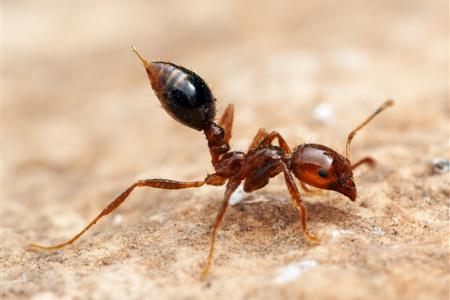How To Treat Fire Ant Bites
 Without good fire ant control, your yard can be a dangerous place. When you step into or sit on an ant mound, hundreds of thousands of ants can be disturbed.
Without good fire ant control, your yard can be a dangerous place. When you step into or sit on an ant mound, hundreds of thousands of ants can be disturbed.
Unlike other ants, fire ants are fiercely territorial and aggressive. They will charge out ready to defend their home. If you start to feel ants crawling on you, brush them off as quickly as possible.
When ants bite (and sting)
- Get away. Get away from the mound as quickly as possible.
- Brush, don’t slap. Make sweeping downward motions to sweep off as many ants as possible. Like bees slapping at ants will only impale them into the skin.
- Pick them off. Some ants will cling to the death with their mandibles while stinging repeatedly. They will need to be plucked off one at a time.
Some people are allergic to fire ant bites (stings)
Normal, if not miserable, symptoms of fire ant bites (stings) include pain, redness, swelling, and itching.
The following symptoms require emergency care:
- Disorientation and/or dizziness
- Nausea, vomiting or diarrhea
- Hives, itching and swelling in areas other than the place where you were bitten (stung)
- Tightness in the chest and/or difficulty breathing, or wheezing
- Swelling of the throat, tongue and lips, or difficulty swallowing
- Blackout, coma, and even cardiac arrest can occur from Anaphylactic shock and often results in death. Seek immediate medical attention.
*If you are allergic to bees or wasps, be wary of fire ants. There may be an allergic connection. You may need to have or use an epi-pen (epinephrine) prescribed by a doctor. Use as directed. Once stung by fire ants, if a moderate allergic reaction occurs, a severe reaction may occur if stung by fire ants again in the future.
How to treat fire ant bite (fire ants bites)
- Clean the site. The preferred method to clean the site is soap and water. Hand sanitizer or a disposable wipe will work in a pinch. This will help clear away dirt and debris from the area and help prevent infection.
- Elevate. If possible, elevate arm (s) and/or leg (s) to help minimize swelling.
- Cool compress. A cool compress will reduce swelling and relieve some of the itching.
- Antihistamine. Take an over-the-counter antihistamine (Benadryl, Zyrtec, etc.). Apply an antihistamine ointment (Benadryl, Hydrocortisone, etc.) to the area (s). This will help alleviate swelling, itching and other uncomfortable symptoms. A paste made with water and baking soda rubbed on the area may also help.
- Don’t pop them. The blister(s) that forms after swelling goes down will subside naturally. If you break or scratch it, it may become infected. If the blister breaks, clean the area with soap and water. If the area becomes discolored or leaks pus, it may be infected.
Take precautions
Use Fire Ant Control, LLC as your professional ant killer to treat for ants, especially in areas frequented by people and animals. We know how to kill fire ants.
Point out mounds to kids and out-of-town family/friends.
Stomp a few times before setting a blanket or sitting on the ground. Look to see if fire ants swarm from a hidden location.
Wear protective clothing when gardening, walking, or exercising in an untreated area. Wear shoes or boots and tuck pant legs into socks.
Flooded fire ants float on water and become even more aggressive. They will climb on any object they come in contact with. Fire ants under duress will also inject more venom per sting.
